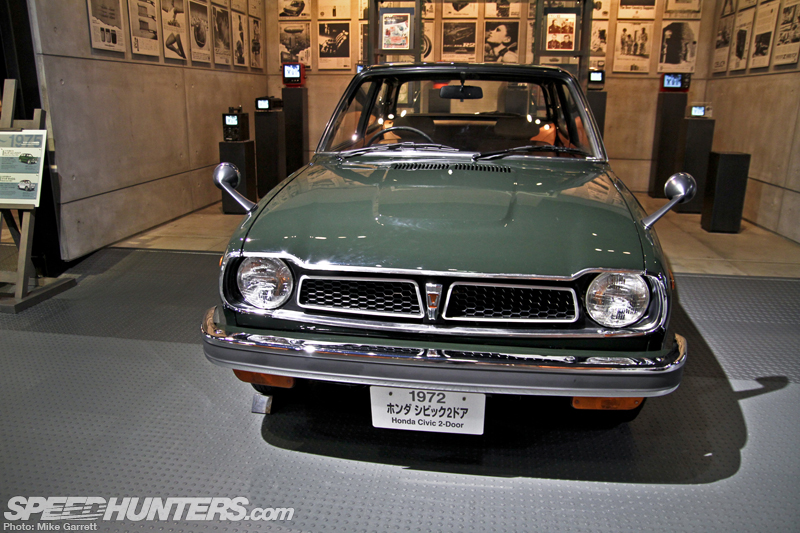
Let’s go right ahead now and continue our journey through Japanese motoring history at the Toyota Automobile Museum in Japan. In yesterday’s post we left off just as Japan was emerging from the post war period, travelling full speed down the road to economic and industrial recovery – with motor vehicles playing an extremely important role in it all.
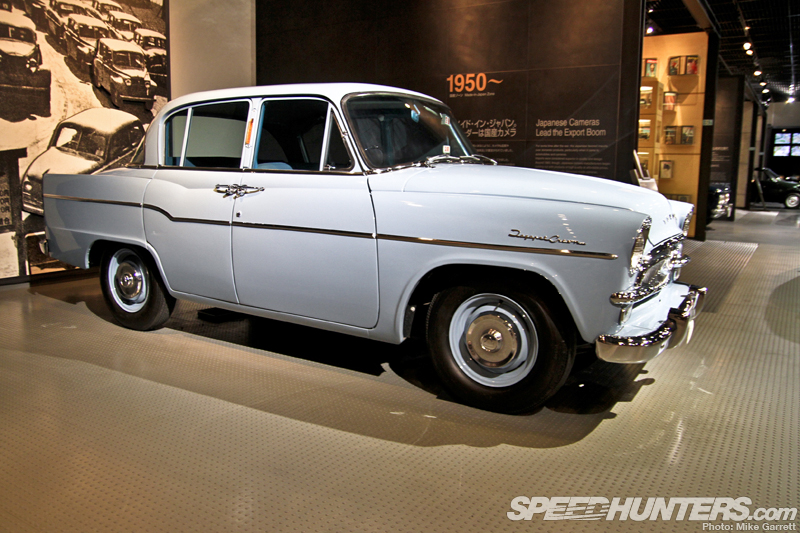
As seen in the last post, during most of the 1950s, vehicles in Japan were largely used by companies and government agencies rather than individual owners. Eventually, Japanese automakers began to develop vehicles like the Toyopet Crown, which is considered Japan’s first real mass-produced domestic passenger car. Although the Crown was designed for private use, it was also very popular as a taxi (and has been ever since). This RS20 model Crown from is a replica of a late ’50s taxi, in which fares began at just 80 yen.
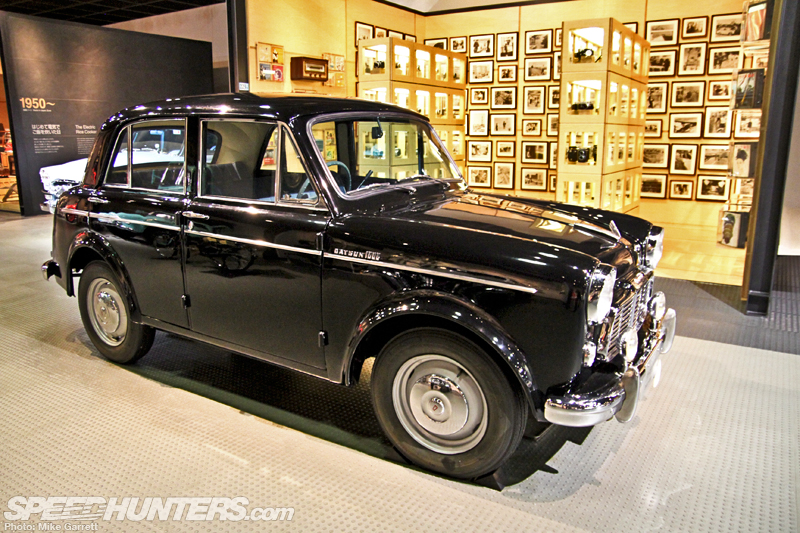
Datsun also entered the passenger car market with its Model 211, which featured a low price and the capability to drive on the new highways that were beginning to pop up in the country – despite the fact that it had just 34 horsepower.
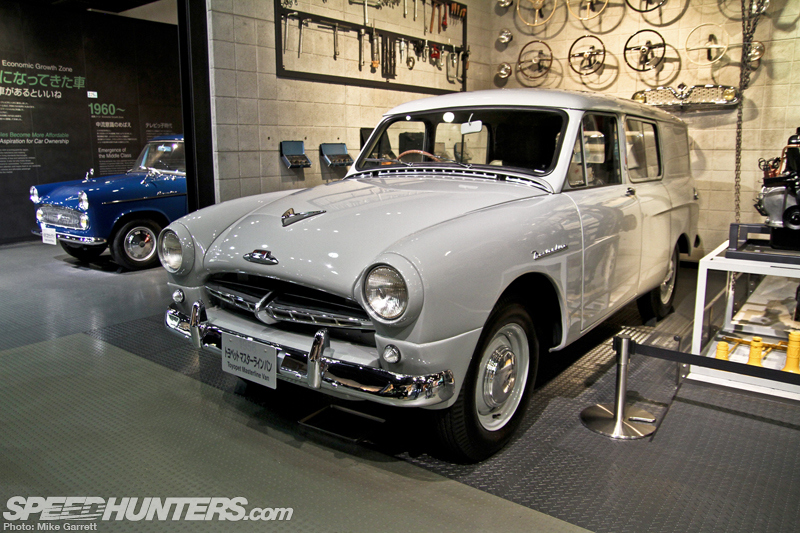
With more and vehicles beginning to appear in Japan, it was also necessary that garages would spring up across the country to repair and maintain them.
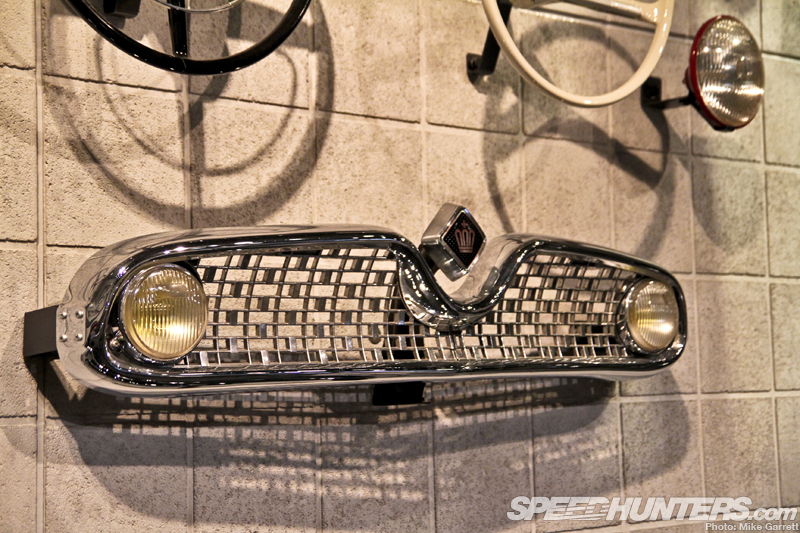
The museum includes a life size diorama showing some of the things you might have seen in a Japanese garage circa the late ’50s or early ’60s.
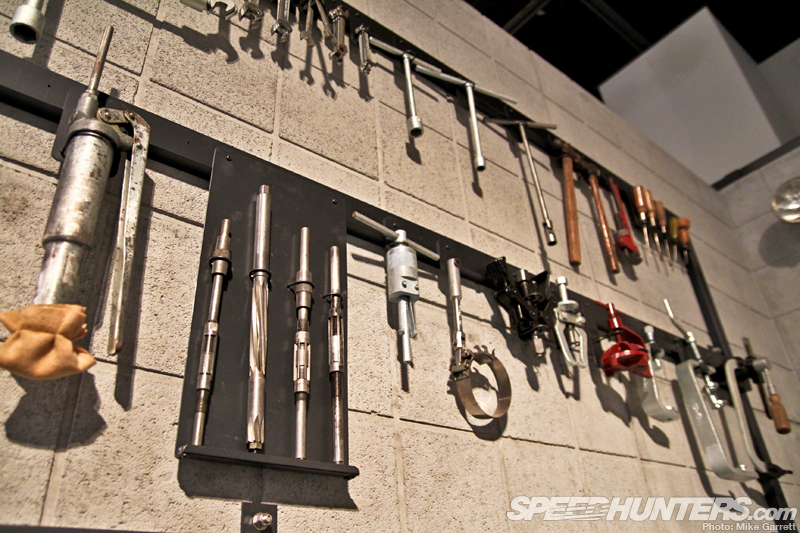
Along with a variety of tools from the period…
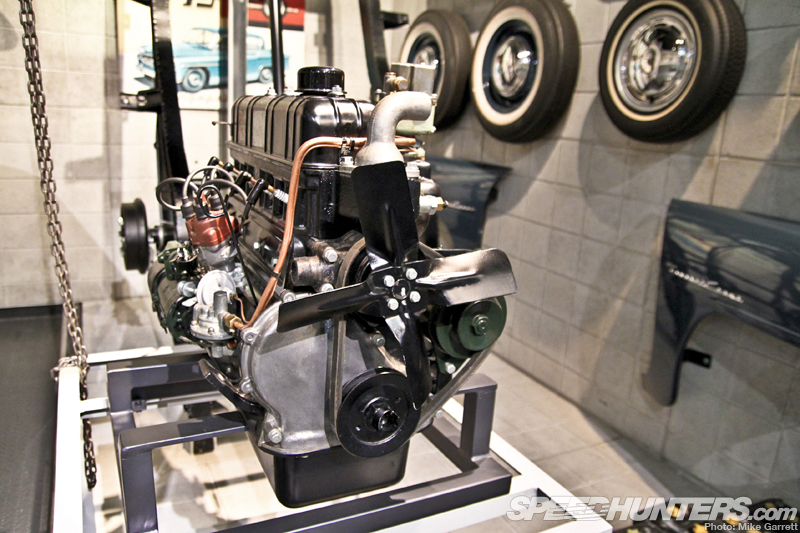
… they’ve also included a complete engine set-up.
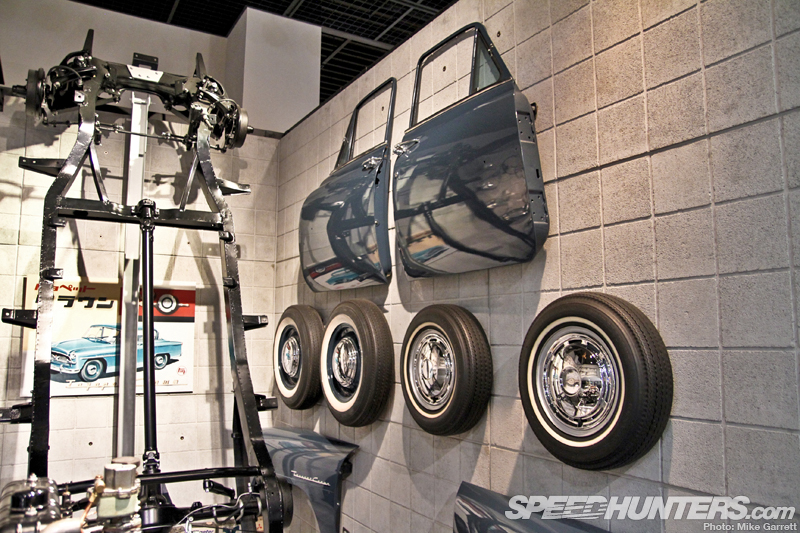
There are also other components which are displayed like a 1:1 scale model kit. Because of the less than ideal road conditions and the untested nature of the mechanical parts, these garages were crucial to keeping the country running.
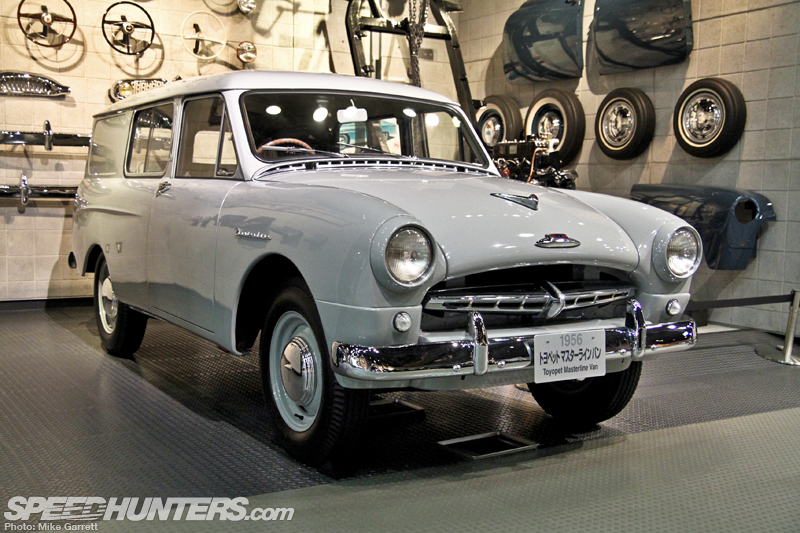
Parked in the garage is this cool 1956 Toyopet Masterline Van – a vehicle that was extremely popular among mechanics and other businesses thanks to its utility and comfort.
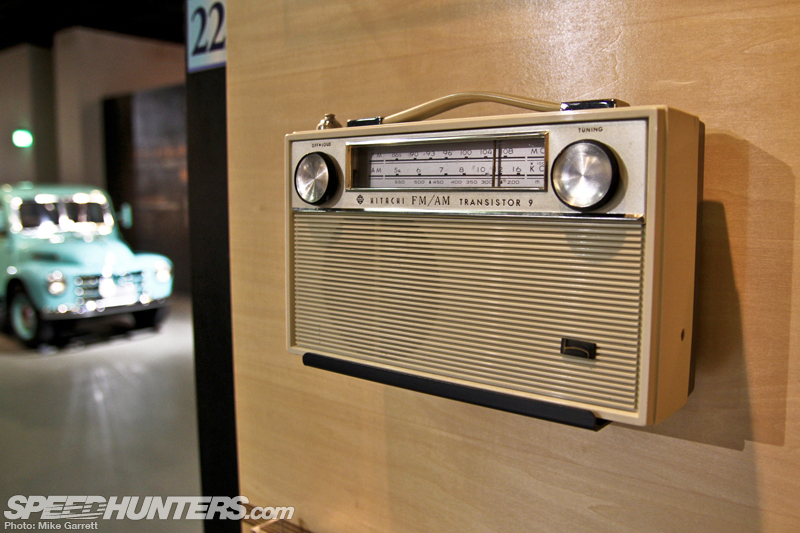
As mentioned previously, the exhibit includes not just vehicles but other consumer goods and pop culture items which helped define the eras. As the 1960s rolled around, Japanese brands continued to make strides both domestically and in the export market.
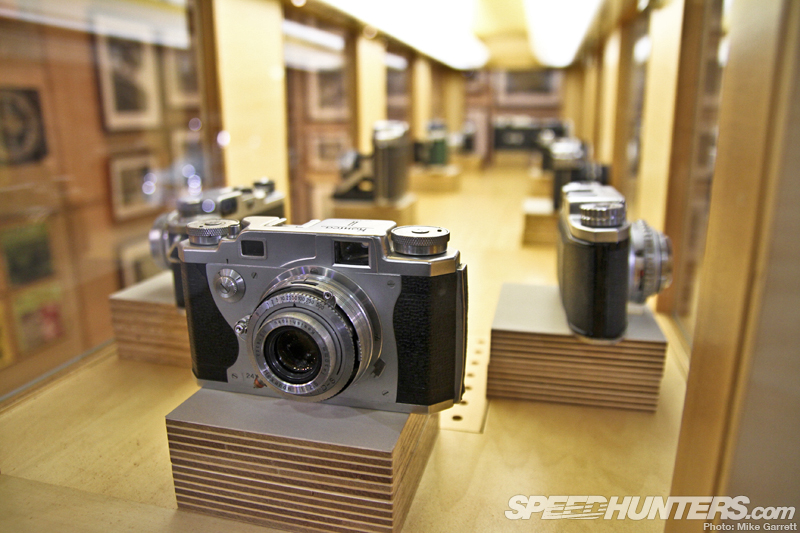
At the forefront of this export movement were Japanese-made cameras, which quickly established a reputation for quality and affordability in countries across the world.
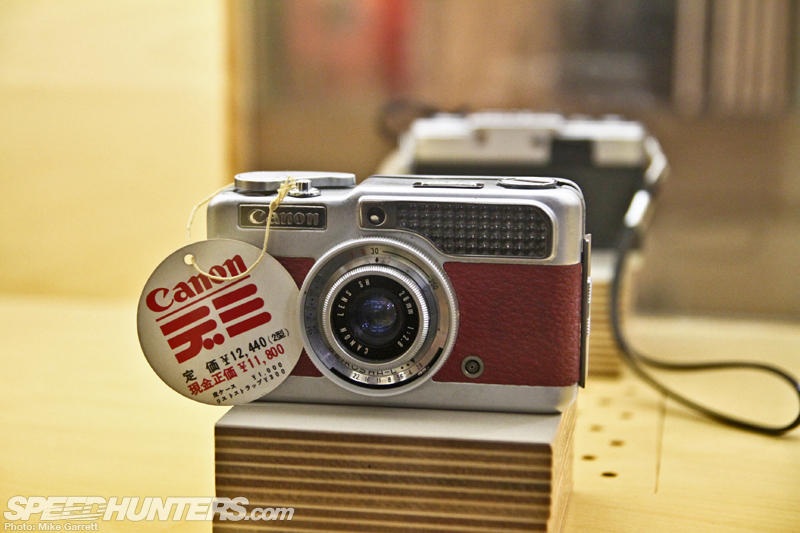
In light of this, the exhibit includes an impressive display of vintage camera equipment that I’m sure would be just as exciting to photo nerds as the cars. I’m looking at you Larry Chen!
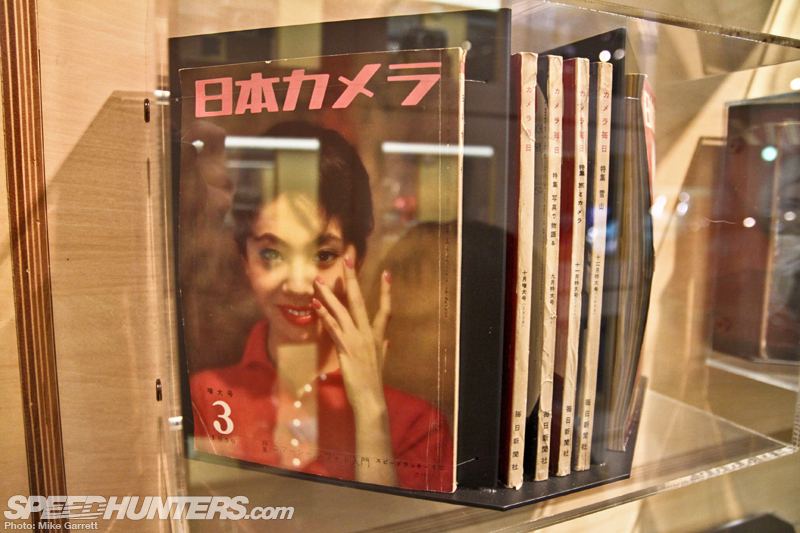
It was all part of an increasingly large middle class and living standards that continued to rise, right alongside the level of technology.
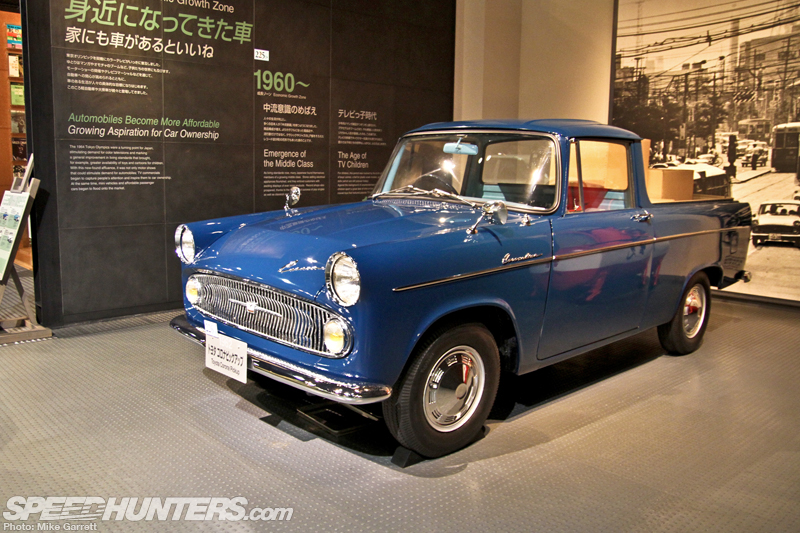
As the 1960s continued, automobiles became increasingly attainable for the middle class, along with other new consumer items like air conditioning and color television. Car, cooler, and color TV – the three Cs of the Japanese middle class in the ’60s. Pictured here is a 1962 Corona pickup truck.
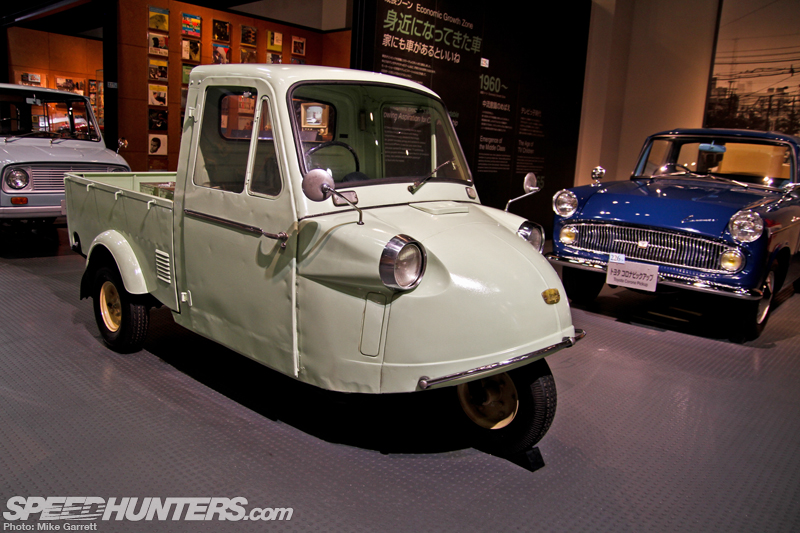
The three-wheeled Daihatsu Midget also began showing up in increasing numbers on Japanese roads, and its unique shape soon became a sign of the times.
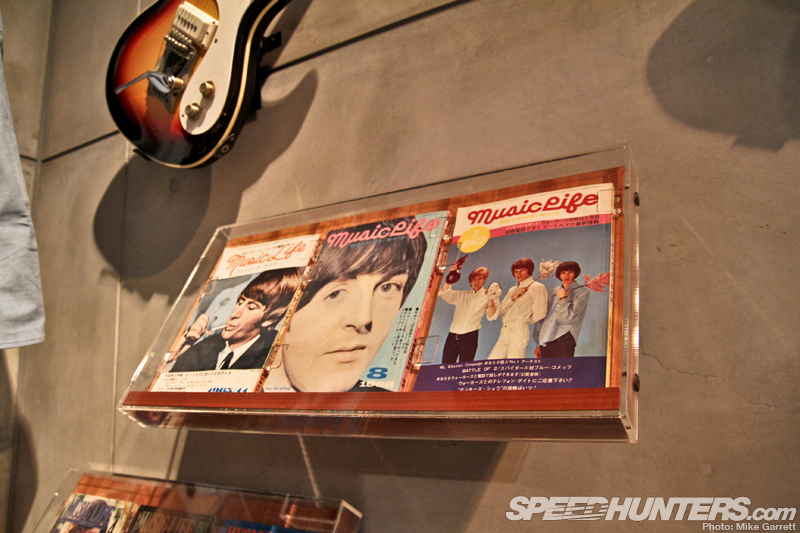
Shortly after, The Beatles arrived as part of a new explosion in fashion and youth culture that took over not just Japan, but the world during the mid 1960s.
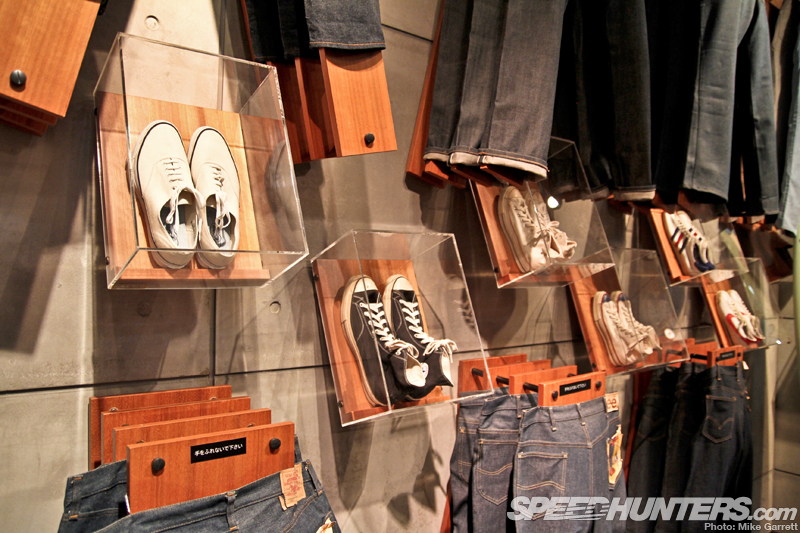
Jeans, sneakers, miniskirts and rock ‘n roll would all become commonplace in the rapidly evolving country…
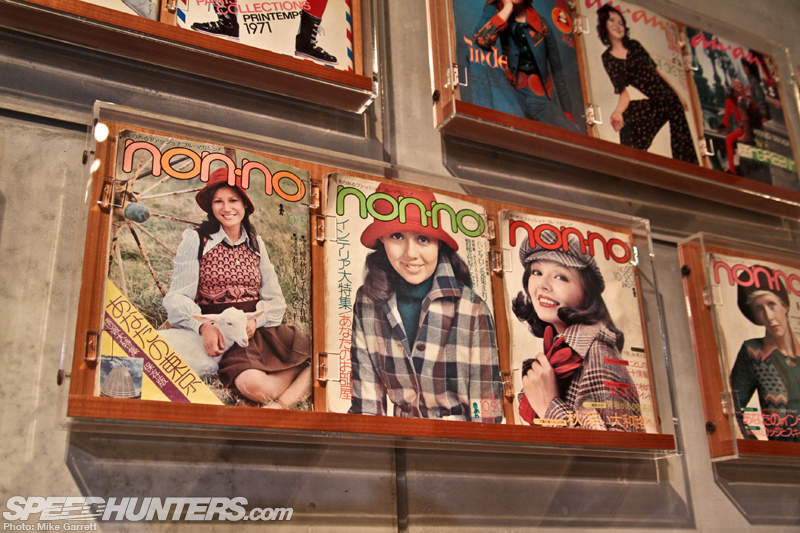
.. as the importance of fashion would rise in equal proportion to consumer spending.
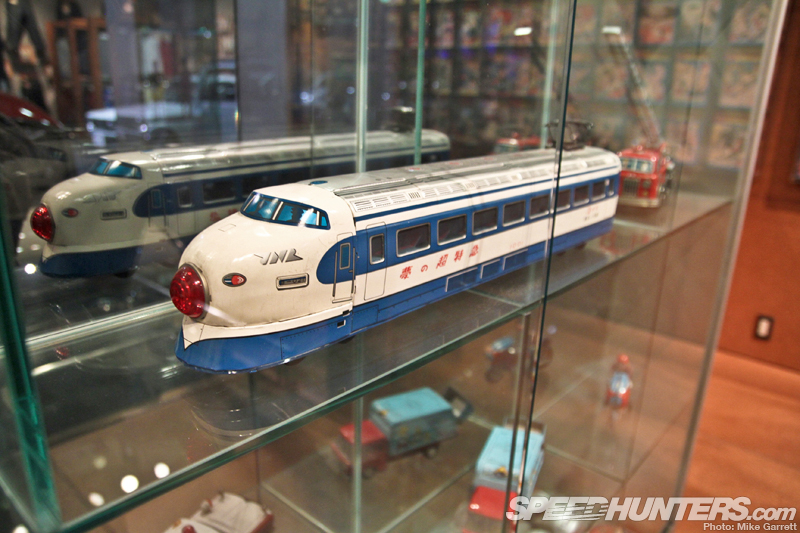
At the same time, Japan saw the introduction of other groundbreakinng technologies, like the Tokkaido Shinkansen bullet train which entered service in 1964 and could link Tokyo and Osaka in just a few hours.
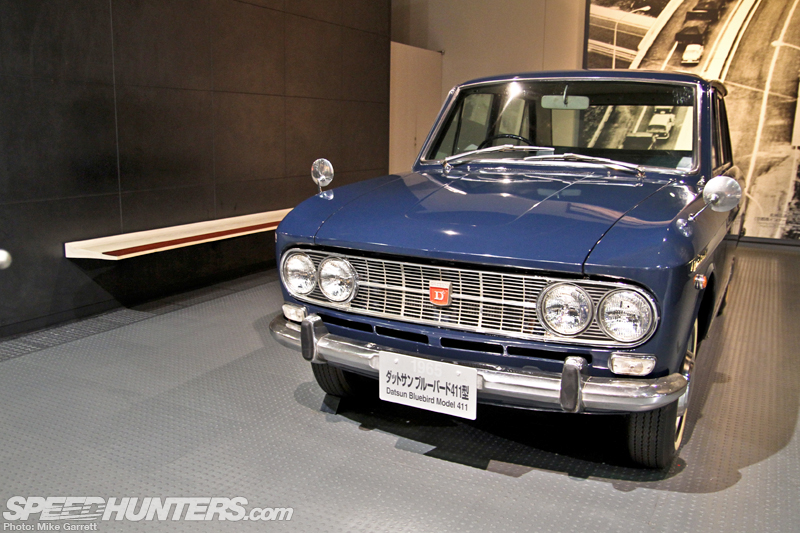
On the roads meanwhile, car ownership continued to grow to all-time highs with vehicles like the Datsun Bluebird being there to greet the booming market.
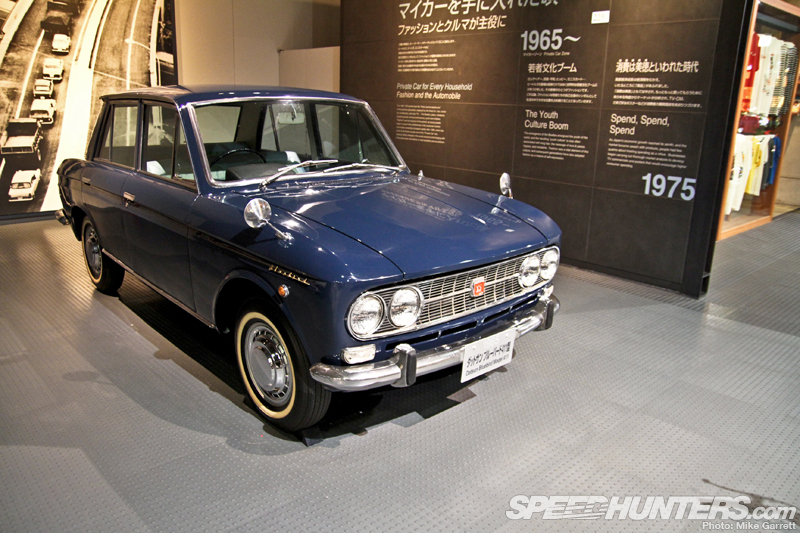
With more power and more comfort than ever before, cars like the Bluebird were the perfect choice to cruise Japan’s ever-expanding system of expressways.
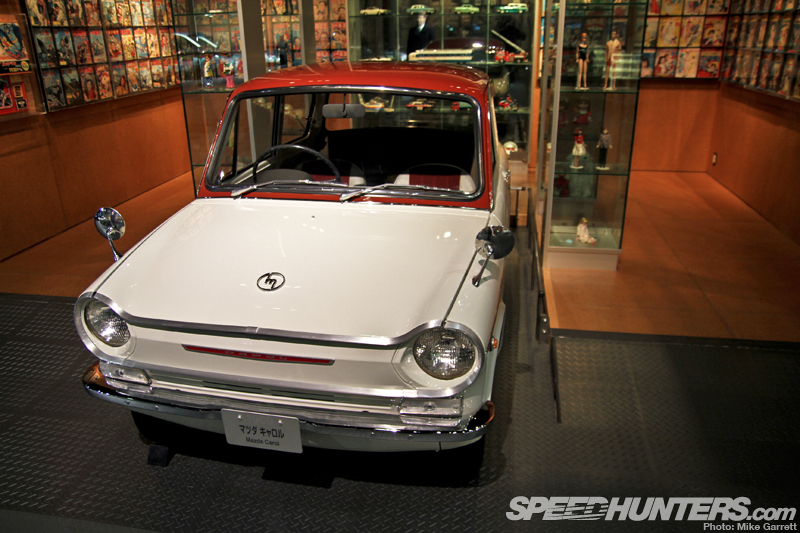
By the later part of the 1960s, the ‘Private Car Era’ was in full swing thanks in large part to technologically advanced mini cars like the Mazda Carol, which truly made car ownership attainable for the masses.
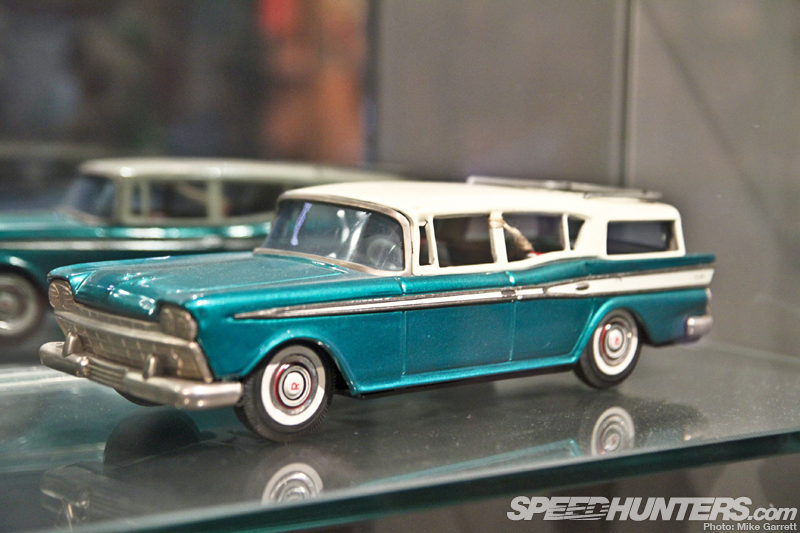
Alongside the full size cars, the exhibit also features some very cool vintage toys which will surely bring back memories to those who grew up during this time.
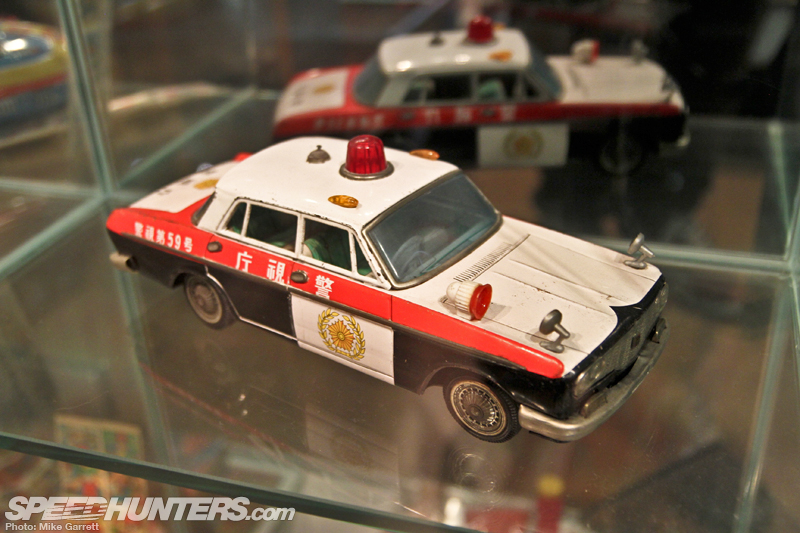
This Toyota Crown patrol car toy is just too cool.
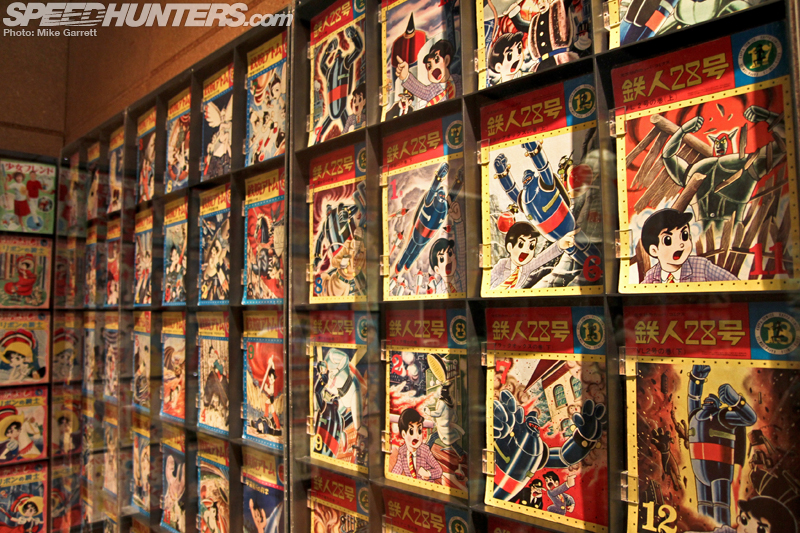
Also present are examples of the Japanese manga comics that exploded during the ’60s and have been a huge part of the country’s popular culture ever since.
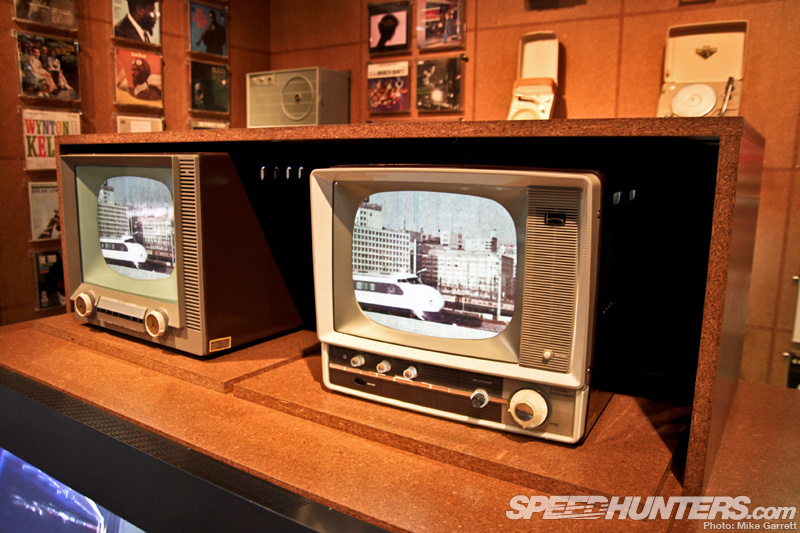
How about some vintage color TVs, which are fittingly filled with images of Shinkansen crossing the landscape.
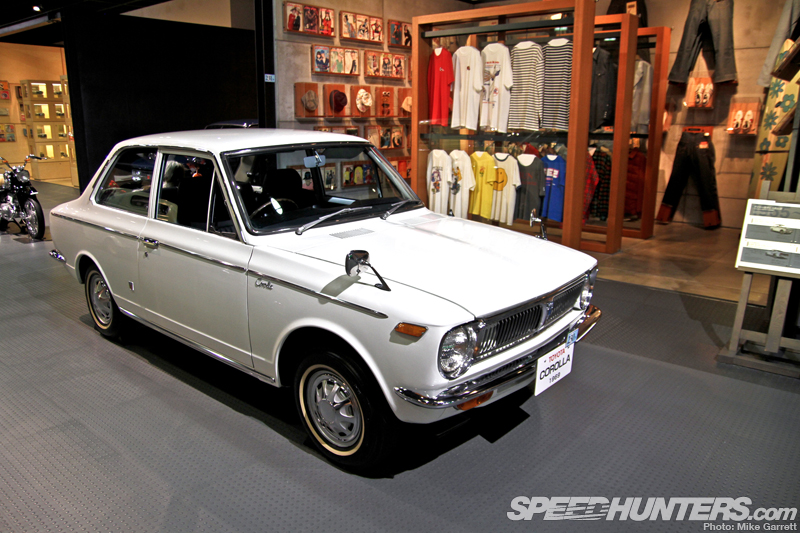
Introduced in 1966, the Toyota Corolla is another car that would have a massive impact on the Japanese car market.
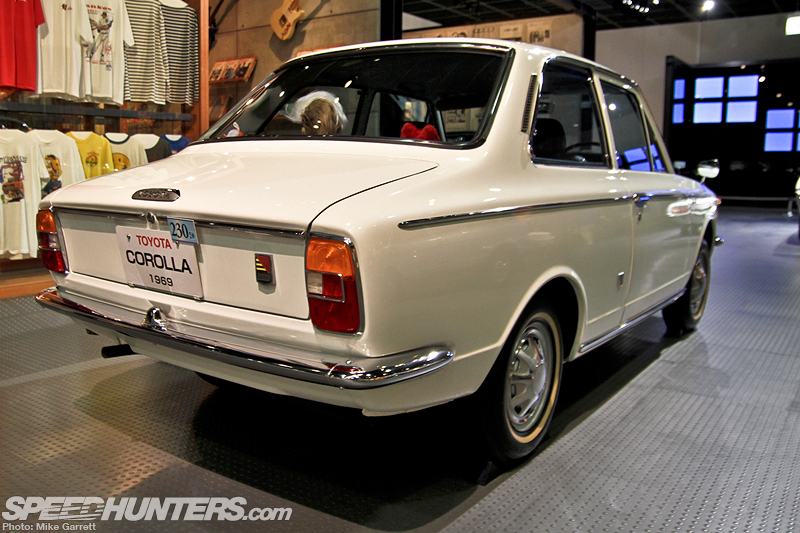
Designed to compete directly with Nissan’s Sunny, the Corolla’s additional 100cc of displacement became a centerpiece for the car’s marketing campaign and helped push it to best seller status.

Elsewhere, in the selection of late ’60s and early ’70s fashion items on display I found these awesome Ed Roth style T-shirts. To me these never went out of style.
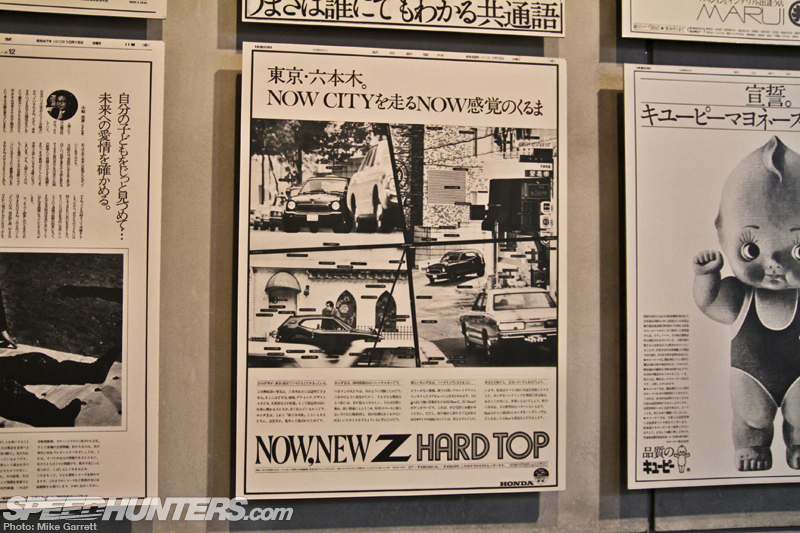
Plenty of magazine advertisements from the period are also displayed to help take you back to the era.
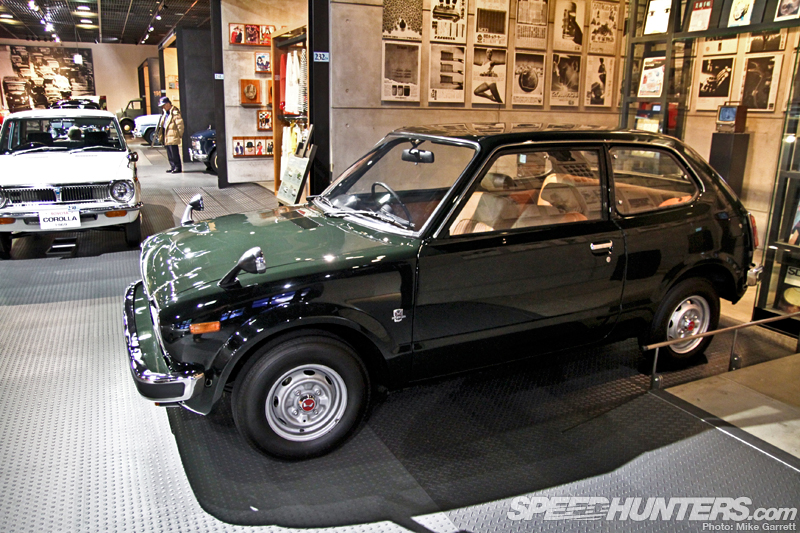
Another massively important car to Japan’s growing auto industry was the Honda Civic, which is represented by this beautiful 1972 model. Like the aforementioned Corolla, the Civic would of course go on to help Japanese automakers rise to global dominance in the coming years.
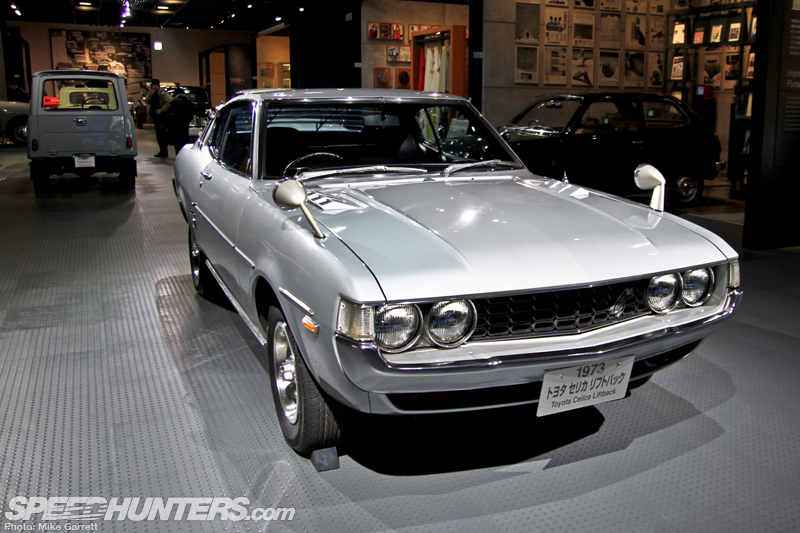
Next up, we have one of the sexiest cars in the entire building – a 1973 model Toyota Celica 2000 GT liftback.
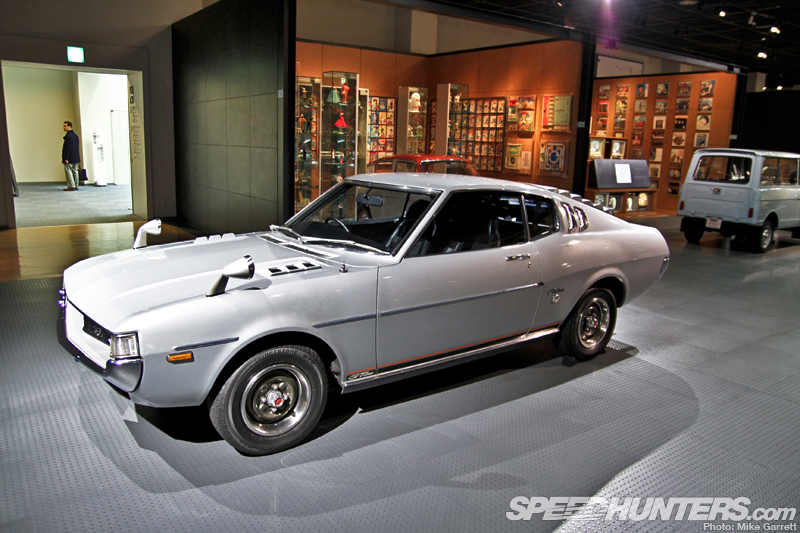
While so many cars could have been chosen to fill this spot, the Celica LB is a perfect example of how the Japanese were seeing cars as more than just transportation. Thanks to its liftback bodystyle, the car was also capable of carrying surfboards or other leisure goods.
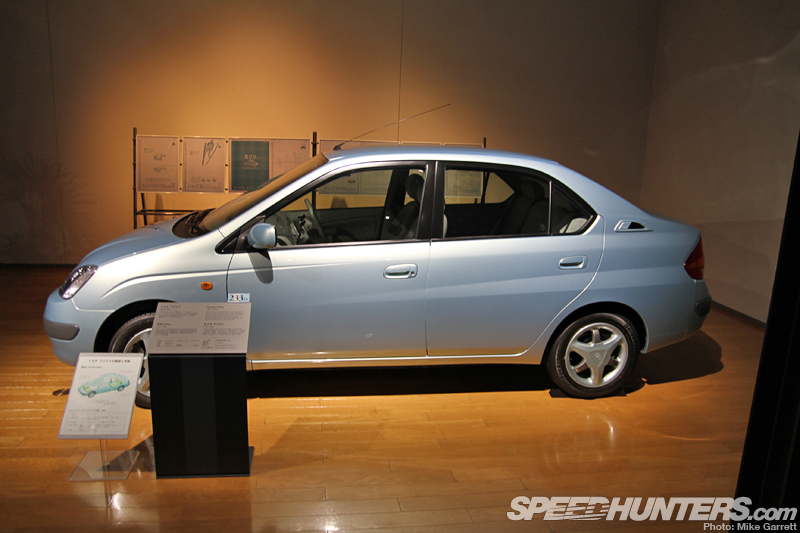
And the rest as they say is history. While space restraints have kept the timeline from including the remainder of the ’70s or the economic bubble that Japan would experience in the ’80s, the exhibit instead wraps up with a 1997 Toyota Prius as an example of advancing technology and the changing role of the car during the 21st century.
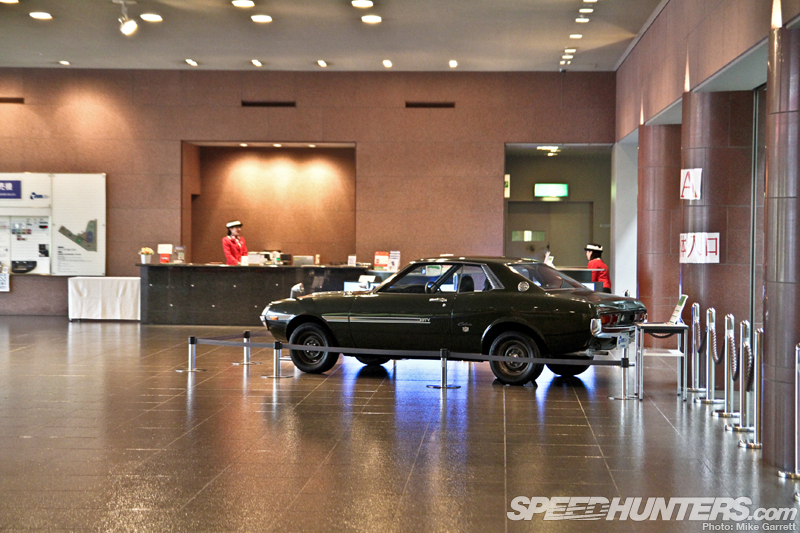
And with that we’ve finally reached the end of my detailed exploration of the Toyota Automobile Museum. I hope you guys have enjoyed the series of stories, and should you ever find yourself in central Japan with some time to spare I highly recommend checking out this place for yourself.
Mike Garrett
Instagram: speedhunters_mike
mike@speedhunters.com
Other Toyota Automobile Museum stories on Speedhunters
Other Museum stories on Speedhunters





